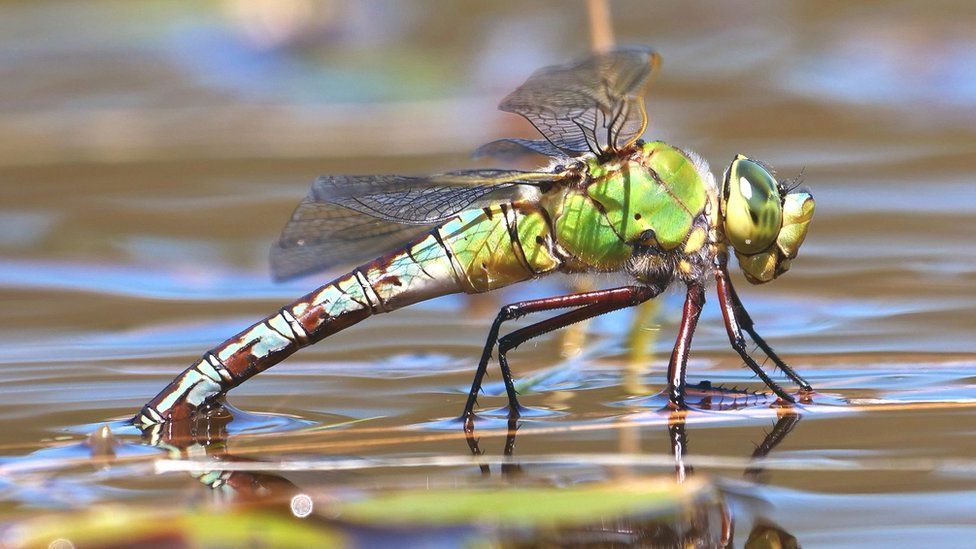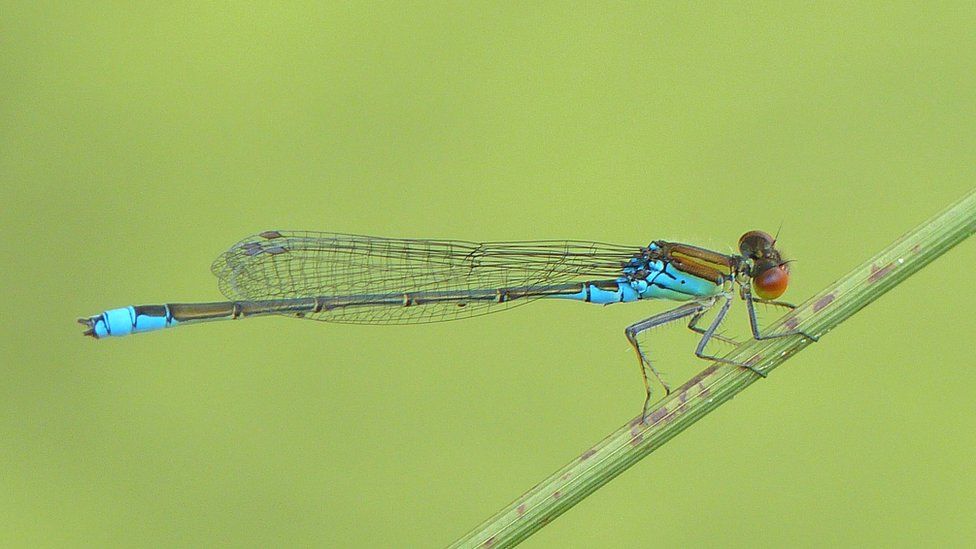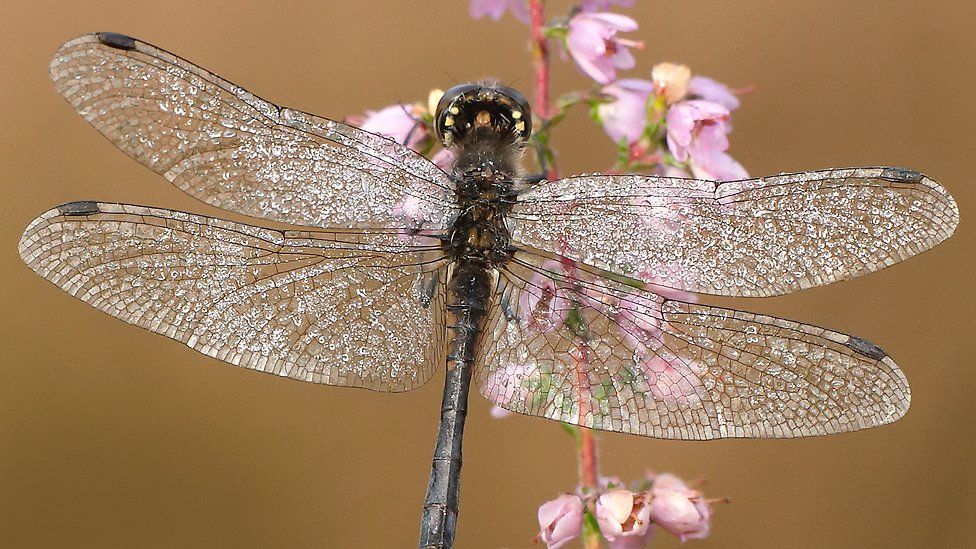By Helen Briggs
BBC Environment correspondent

IMAGE SOURCEDAVE SMALLSHIRE
The emperor dragonfly is expanding north into Scotland and Ireland
Dragonflies are moving northwards across Britain and Ireland as temperatures rise.
More than 40% of species have increased their distribution since 1970, while only about 10% have declined, according to a new report.
Experts from the British Dragonfly Society say it's an indicator of the effects of climate change.
There is concern over the loss of populations of insects due to factors such as pollution and habitat loss.
Insect decline linked to light pollution
Insect decline may see 'plague of pests'
Alarm over decline in flying insects
Conservation officer Eleanor Colver said while their data can determine where dragonflies are, it cannot determine exactly how many there are - and whether numbers have increased overall.
"Factors such as the use of pesticides (reducing their flying insect prey), water pollution and habitat loss continue to threaten the health of dragonfly populations within species' existing ranges," she said.

Dragonflies are moving northwards across Britain and Ireland as temperatures rise.
More than 40% of species have increased their distribution since 1970, while only about 10% have declined, according to a new report.
Experts from the British Dragonfly Society say it's an indicator of the effects of climate change.
There is concern over the loss of populations of insects due to factors such as pollution and habitat loss.
Insect decline linked to light pollution
Insect decline may see 'plague of pests'
Alarm over decline in flying insects
Conservation officer Eleanor Colver said while their data can determine where dragonflies are, it cannot determine exactly how many there are - and whether numbers have increased overall.
"Factors such as the use of pesticides (reducing their flying insect prey), water pollution and habitat loss continue to threaten the health of dragonfly populations within species' existing ranges," she said.

The small red-eyed damselfly: Now found from Cornwall to County Durham
The report, State of Dragonflies 2021, incorporates 1.4 million records from 17,000 recorders gathered from 1970 onwards.
It assesses the fortunes of 46 species of dragonflies and their close relative - the damselflies - across Britain and Ireland.
Since 1995, several species have reached Britain from southern Europe for the first time - and at least two more have reappeared after long absences.
Species expanding their range include the emperor dragonfly, migrant hawker, ruddy darter, black-tailed skimmer and small red-eyed damselfly.
In contrast, some upland and northern dragonflies are in retreat, including the common hawker and black darter, perhaps because of the loss of peatbogs or extreme droughts.
"The increase in many species, if not all, we can put down to a combination of climate warming and more or better wetland habitats such as an increase in the number of ponds, lakes, gravel-pits and reservoirs in recent decades," said Dave Smallshire, co-editor of the report.
But people should not get the message that all is "tickety-boo with dragonflies", he added.
"The overwhelming message is that global climate change - and in the case of Britain and Ireland - significant climate warming is likely to have had an over-riding effect on many of these changes," he said.

The report, State of Dragonflies 2021, incorporates 1.4 million records from 17,000 recorders gathered from 1970 onwards.
It assesses the fortunes of 46 species of dragonflies and their close relative - the damselflies - across Britain and Ireland.
Since 1995, several species have reached Britain from southern Europe for the first time - and at least two more have reappeared after long absences.
Species expanding their range include the emperor dragonfly, migrant hawker, ruddy darter, black-tailed skimmer and small red-eyed damselfly.
In contrast, some upland and northern dragonflies are in retreat, including the common hawker and black darter, perhaps because of the loss of peatbogs or extreme droughts.
"The increase in many species, if not all, we can put down to a combination of climate warming and more or better wetland habitats such as an increase in the number of ponds, lakes, gravel-pits and reservoirs in recent decades," said Dave Smallshire, co-editor of the report.
But people should not get the message that all is "tickety-boo with dragonflies", he added.
"The overwhelming message is that global climate change - and in the case of Britain and Ireland - significant climate warming is likely to have had an over-riding effect on many of these changes," he said.

Black darter: With a home in upland bogs, this species is in decline
Dragonflies are fast-flying, four-winged insects with long bodies and large eyes. They were some of the first winged insects to evolve, some 300 million years ago.
Scientists are increasingly concerned about the decline of some populations of insects.
One scientific review of insect numbers in 2019 pointed to 40% of species undergoing "dramatic rates of decline" around the world.
The study said bees, ants and beetles were disappearing eight times faster than mammals, birds or reptiles, while other species, such as houseflies and cockroaches, were likely to boom.
Dragonflies are fast-flying, four-winged insects with long bodies and large eyes. They were some of the first winged insects to evolve, some 300 million years ago.
Scientists are increasingly concerned about the decline of some populations of insects.
One scientific review of insect numbers in 2019 pointed to 40% of species undergoing "dramatic rates of decline" around the world.
The study said bees, ants and beetles were disappearing eight times faster than mammals, birds or reptiles, while other species, such as houseflies and cockroaches, were likely to boom.
No comments:
Post a Comment